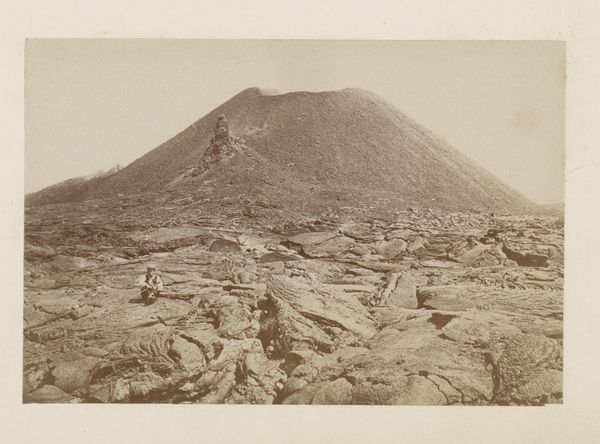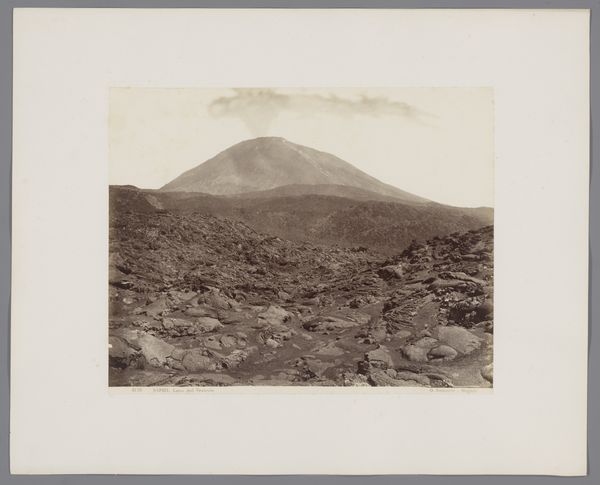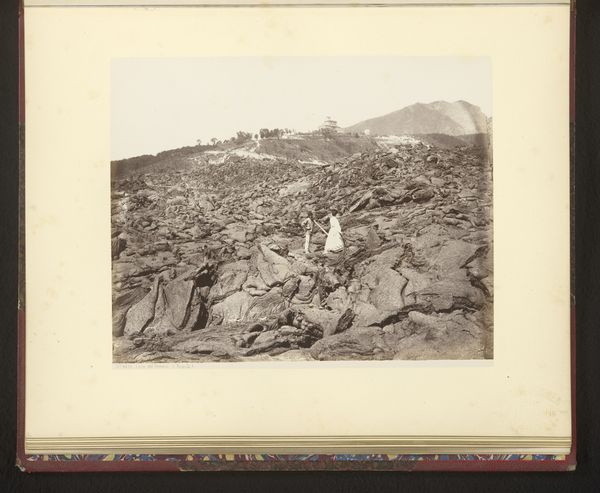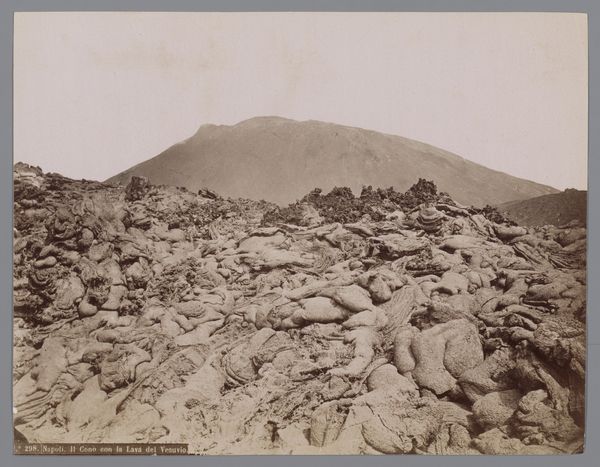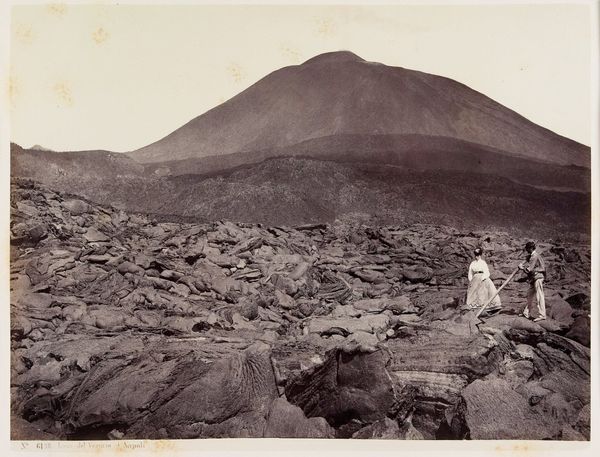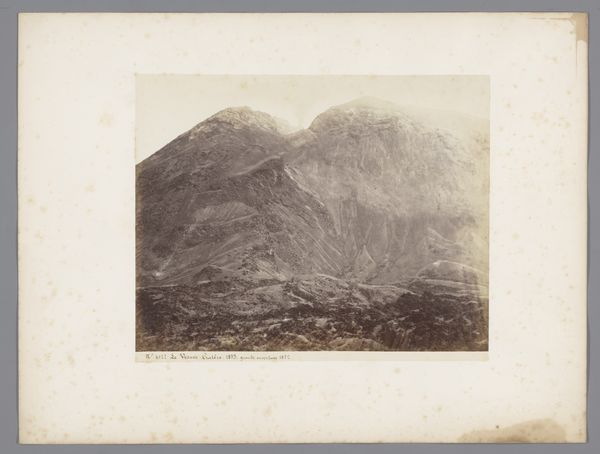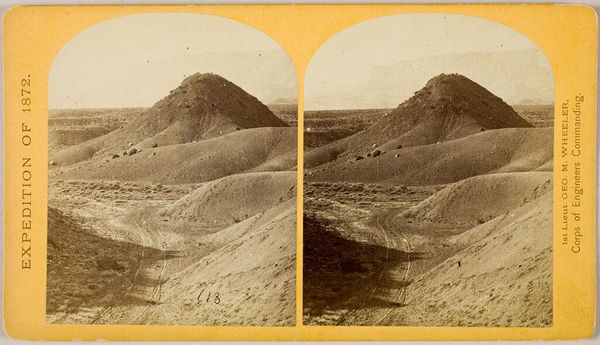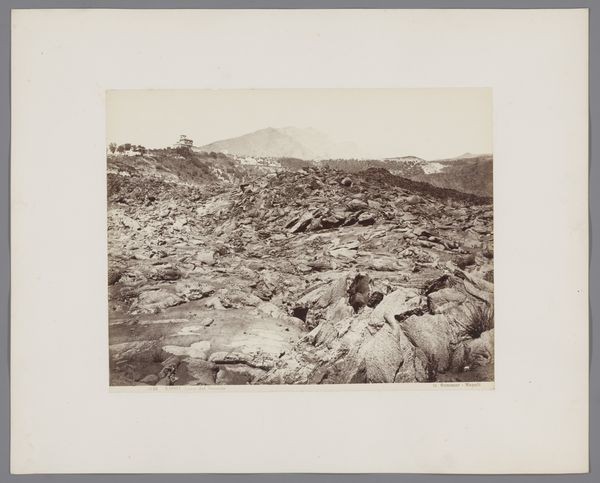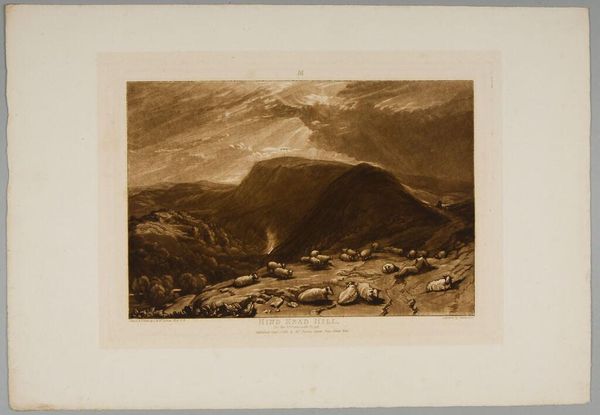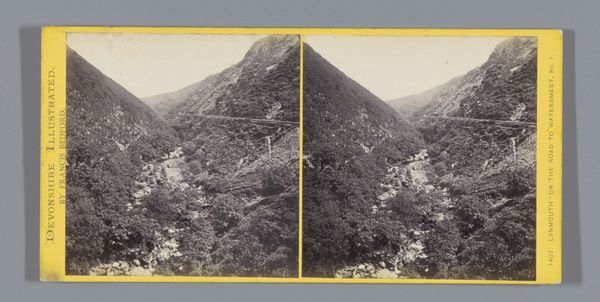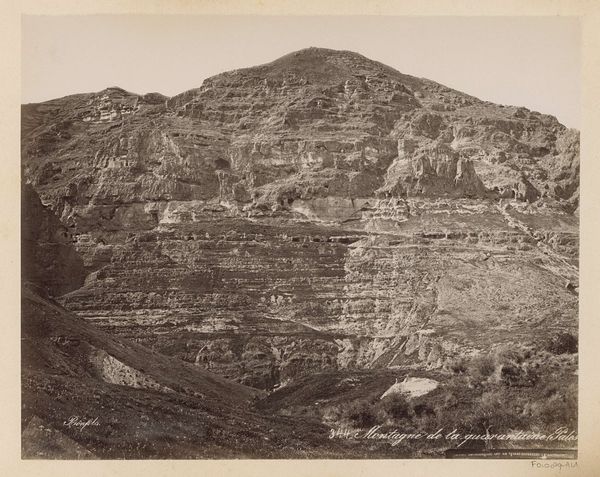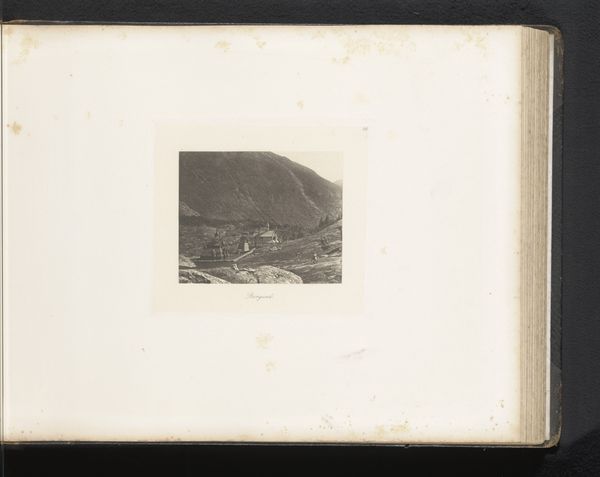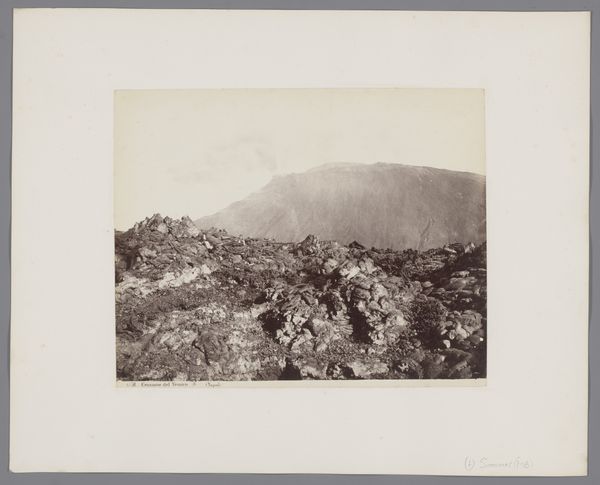
photography, gelatin-silver-print
#
16_19th-century
#
landscape
#
photography
#
gelatin-silver-print
#
realism
Dimensions: height 198 mm, width 250 mm, height 249 mm, width 325 mm
Copyright: Rijks Museum: Open Domain
Editor: This is Giorgio Sommer’s "View of Vesuvius", taken between 1857 and 1914, a gelatin silver print currently housed in the Rijksmuseum. The scale is incredible; it feels desolate and almost lunar. What draws your eye when you look at it? Curator: Immediately, the focus goes to the material conditions – the solidified lava flow in the foreground. Look at the labor involved in even accessing this viewpoint and capturing the image with then-current photographic technology. It's not just a pretty picture; it's about understanding how resources were mobilized and used to create this representation of nature. Editor: I see what you mean about labor. What does that say about our relationship to nature as depicted here? Curator: The tiny figures atop the cooled lava are telling; the material choices of the artist emphasize the scale of the volcano, diminishing their human presence and suggesting the industrial process that rendered the final photograph, creating a market for consuming images of the natural world. Do you see evidence of human presence changing the environment? Editor: Well, they appear more as a demonstration of scale, making the volcano more immense. They seem to be spectators, maybe a hint towards future exploitation? I'm particularly struck by the different tones achieved using gelatin silver printing; it feels so tactile. Curator: Precisely. And consider the economic forces at play here – who could afford the equipment, the travel, the prints? This is more than just a landscape; it reflects a whole network of materials, labour, and consumption intertwined with our changing perspective of landscape. What a privilege it is to examine its intricacies.
Comments
No comments
Be the first to comment and join the conversation on the ultimate creative platform.
